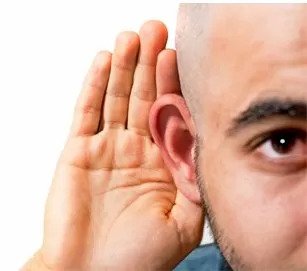How Do I Gain Content Visibility?
Why is content important?
Content has to make sense to be a valuable asset - for your company and your audience. Get attention and keep attention from conceptualization to conversion. Optimize your content starting with the basic of SEO to provide insight into what people are looking for. Write unique and educational content that answers their questions and needs. Lead them to your calls to action. Make copy appeal to their eyes, ears, minds, and emotions - and finally action. Hack audience attention with the right keywords, the best semantic and visual readability, and intelligent content design. SEO content visibility gets you rolling.
How do I create content visibility?
Audience Appeal: 5 Senses That Move Customers Through the Content Funnel
- Be seen
- Be heard
- Be listened to
- Be felt
- Be acted on
1. Be seen
How do you get noticed? Optimize your optics with SEO and investing in quality content. Know your audience and what they’re looking for. Use SEO tactics to predetermine the right keyword focus (whether torso or long-tail). You only have 3-5 seconds to keep their attention.
Must-haves for SEO content visibility:
- SEO - Map your content keyword focus to search demand and then fully optimize.
- Heading (H1) – Have a catchy heading containing the keyword(s)
- Sub-headings (H2s) – Have key or closely-related words in H2s
- Metadata – Use an inverted-down pyramid. Include main points and key words. Your keyword should be in your first or second paragraph and metadata.
- Images – Use interesting images and alt tags (hero and 1 - 2 additional images, min.). Learn to optimize for Google Image Search.
- Links to related content
What to watch:
- Organic traffic – Are organic search, revenue, and visits up?
- Paid traffic – Are your campaigns working?
- Impressions, clicks, CTRs – Are you getting SEO notice? Are web audiences noticing?
- New traffic – Unique page views/visitors and impressions.
- Page rank – BrightEdge platform suggests opportunities for higher ranked pages.
- Reach on social media
- Search volume of keywords
- Conversions (where applicable)
2. Be Heard
Is your site falling victim to high bounce rates? Make sure your content is not only discoverable, but visually easy to process. This will keep your bounce rates low and secure your content visibility. Remember the importance of first impressions. High bounce rates could be as simple as bad UX, overly dense material, boring presentation, or being out-of-date.
- Make them listen with captivating content layout:
- Consistency – Obey your style guide. Stay true to tone, voice, text fonts, and a pleasing color palette
- Simplicity – Simplify navigation with headings, subheadings, bulleted lists, and uncluttered UX/UI
- Break it up – Chunk out long papers and share material in smaller, more concise forms.
- Reading ease – Avoid complex syntax, alienating jargon, and wordiness. The digital audience wants easy reads, not Hawthorne.
- Pictures – Videos, photos, infographics, animation, and graphics are powerfully popular.
- Mobile friendly – Mobile is everything. Make sure that your content looks stellar on mobile devices. (Don't forget Google Amp!)
- Load time – Slow or cluttered pages with embedded ads lead to a high attrition rate.
- Expand universal listing opportunities with multimedia formats
What to watch:
- Bounce rates – Reveal if people feel inspired to stay after clicking.
- Customer behavior – Links clicked, UX, pages per session
- Average time – Time on pages, average session duration
- Landing pages – Sessions, new users
- Exit pages – Know why people are leaving your site.
- Analytics by device
- Behavior flow report – Does user experience make it easy to move between pages or take action?
3. Be Listened To
 Are your visitors existing the pages you want to keep them on? Are your customers uninspired by your CTAs? You have brought in traffic. You made the destination appealing. So, why aren't you receiving the content visibility you deserve? Probably your content focus.
Are your visitors existing the pages you want to keep them on? Are your customers uninspired by your CTAs? You have brought in traffic. You made the destination appealing. So, why aren't you receiving the content visibility you deserve? Probably your content focus.
- Be your customer’s journey:
- Customer centered – The reader is the hero of the content story. The story is not about you—even in leadership pieces.
- 1st/2nd person voice to keep material relatable
- Avoid hard sells. There are 15-18 touch points before readers are open to sales.
- Target your audience – Use demographics, product knowledge, competitive research, and social media to understand your audience. Build customer personas.
- Who is your customer?
- Where are they? What does that tell you?
- What do they want? (Why bother with your site?)
- Why do they want it? This is their overall mission and values. You should share your mission and value with your customer.
- How can you help them?
- Avoid keyword soup – SEO tells you what they’re looking for. It’s not a substitute for quality content.
- Story structure – a complete structure (beginning, middle, end). Make the customer the content hero.
What to watch for:
- Demographic consistency – Are you hitting your targets?
- Feedback – Actively listen to customers, QA, and CSMs
- CTAs and revenue – Does the product speak to them?
- Average time on page/site and behavior
- Digital marketing goals should play out here.
- Customer journey – Behavior flow reports together with time on page
4. Be Felt
Is your brand working for you? Are you building a strong customer base full of return visits, shares, and engagement? Return customers come back because they relate to and trust your brand. (And you have quality content.) Repeat visits are the reward for consistency, reliability, and value.
- Build your customer base with a strong, relatable brand and quality content:
- Context – Does your material reach your target audience in their daily lives?
- Platform – Adjust content to each platform and its nuances.
- Brand Identity – Tone, voice, and values should be consistent and real.
- Emotion – People make decisions emotionally. Don’t be afraid to relate or be evocative.
- Interest – Offer a unique perspective that inspires conversation.
- Editing – No matter how good you are, self-editing, peer review, and editing tools (like Hemingway.com) are essential to creating quality content
- Respond – Connect with user desires, feedback and comments.
- Think of this as aligning the customer voice with the internal company voice. The insight you get from their search behavior should help focus on what they are thinking.
- What to watch for:
- Time on pages/ read time – Increased time on pages show content quality. Watch read-time rates in proportion to average page time.
- Engagement – Increased engagement shows readers approval and investment. Give ample opportunity. Make it easy to share and respond to content.
- Return users – Unique views show good SEO traffic. Return visitors show long-term growth and strategy success.
- Enrollment – Mailing lists, newsletters, subscriptions, social media following
- Social Media – Improved social media shows brand identity is becoming trusted, interesting, relatable, and/or an authority.
5. Be Acted On
So now what? They really like your brand, but you aren’t hitting content visibility goals. They like you. You get all the traffic. They read your content. But, they do not seem to want to keep your business afloat. The simple answer is that your strategy is off. Revisit what your brand is and who your customer is. Do they match?
The more complex answer is that strategy cannot compensate for bad UX design, products, or snags in the customer journey. Or, you aren’t creating shareable or participatory products. What’s the first thing you look at when shopping online? Reviews. First place you search opinions? Social media. Prioritize building a fan-base for your product and brand.
first thing you look at when shopping online? Reviews. First place you search opinions? Social media. Prioritize building a fan-base for your product and brand.
Ready. Set. Action. Content and demand generation:
- Clear paths to action with simple, low-scroll, easy to navigate:
- UX/UI
- Links
- CTAs
- Menus (Redundancy is okay.)
- Shareable content - Be active and open to social media. Give people a reason to share. (And ask them to.) Create hashtags and campaigns that encourage participation.
- Email lists with sales, news, and offers. Repurpose newsletter content to save time and resources across platforms. (Optimize for SEO content visibility.)
- Easy eCommerce – Provide ease of use, speed, and security to keep people moving through the funnel. Offer a guarantees and outstanding customer service.
- Avoid oversell – Too many popup ads are a quick way to turn customers away.
- Incentivize – Sales, competitions, rewards, limited time offers, free product sample, and other ways of investing the customer are always profitable in traffic and, ultimately, revenue
- User Generated Content (UGC) –Amazon, G2Crowd and other review sites show the power of UGC. People trust other people. Let reviews and submissions help grow your content bucket. Build your brand by including customers wherever you can.
What to watch for:
- Enhanced eCommerce metrics can help you get better insight
- Conversions and revenue increases
- Shares, Likes, Reposting
- Engagement (Social media)
- Enrollment rates
- Active users – One day or long term?
- Cohort behavior
Start your path to better content that's both attention grabbing and high ranking